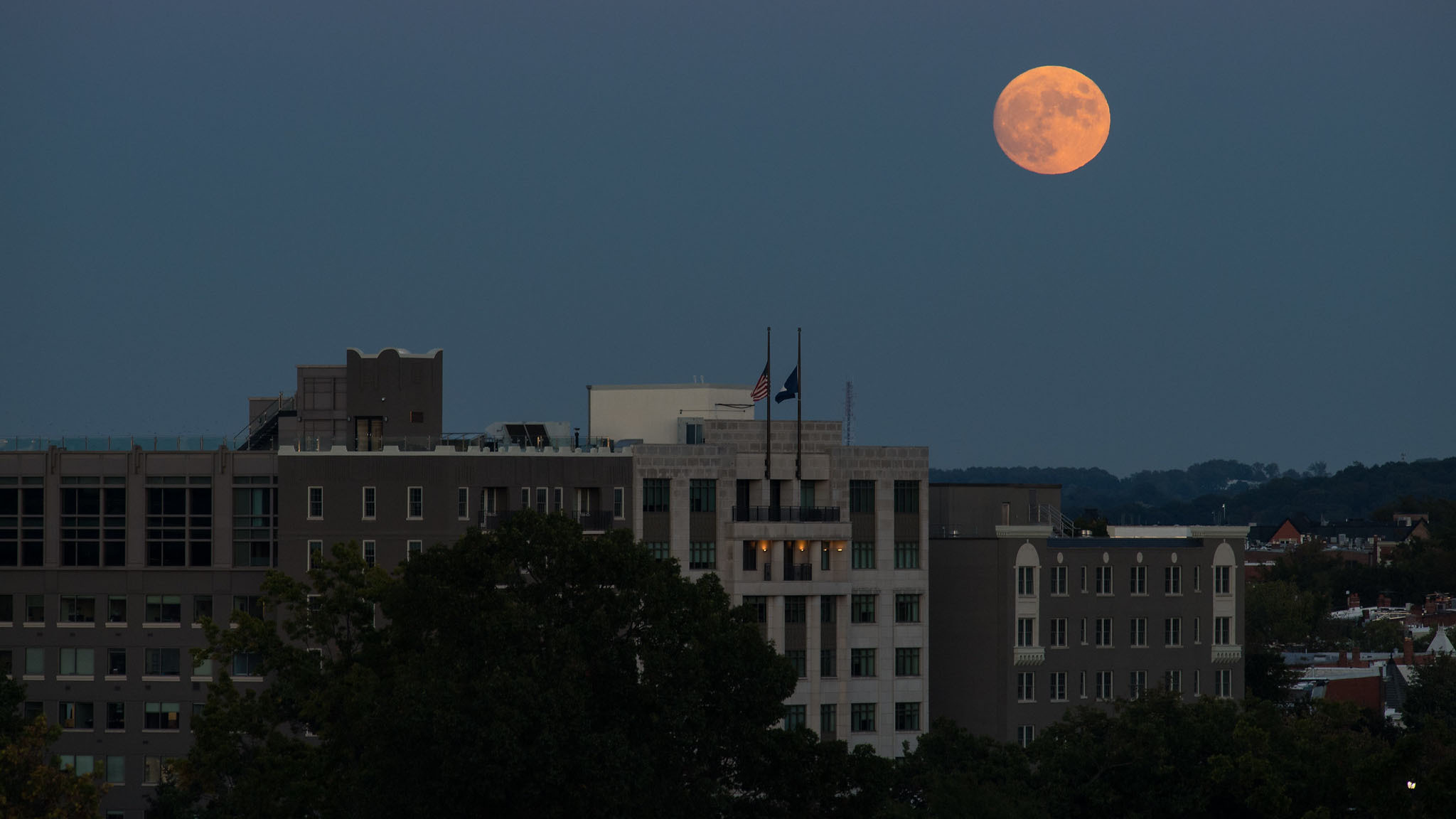October's full 'Hunter's moon' of 2021 wows skywatchers (photos)

The full moon of Wednesday (Oct. 21), known by many as the "Hunter's Moon," provided a celestial treat for skywatchers around the world.
Full moons occur when the orbit of the moon, relative to the Earth, swings around into a position where full sunlight falls upon the planet-facing side. A full moon happens roughly every 29.5 Earth days, and on rarer occasions, the sun, moon and Earth align and allow for a lunar eclipse as the Earth's shadow passes across the moon's face.
Here are some of the images that caught our attention.
Related: How to see Uranus near the full Hunter's Moon this week
In Crimea — a region that caused an international flap between NASA and Roscosmos in 2014 — state agency and TASS photographer Sergei Malgavko captured the full moon rising near Simferopol, an administrative and transport hub of the region.
From Buenos Aires, Agence France-Presse (AFP) photographer Juan Mabromata got an incredible close-up of the full moon on Wednesday. You can even see the ridges of some craters at the upper-left of the image.
In New York City, photographer Tayfun Coskun (via Anadolu Agency) caught Manhattan's famed Chrysler Building slicing the full moon in half.
Breaking space news, the latest updates on rocket launches, skywatching events and more!
NASA photographer Aubrey Gemignani captured a series of images of the nearly full moon rising from The Observatory at America's Square in Washington, D.C., nearby the agency's headquarters. One image shows the moon in the background of a flock of birds. You can see the moon over the lights of cars, while another image zooms in on the moon over a couple of buildings.



The earliest known use of the term "Hunter's Moon" was in 1710, but it is only one name of many used to refer to the full moon of October, according to NASA, which has a list of other cultures' monikers in its full moon guide.
Related: Full moon names (and more) for 2021
The full Hunter's Moon coincided with the peak of the Orionid meteor shower this week, which most sources agree took place around Wednesday (Oct. 20). You may still catch a lot of meteors off-peak, but the bright moon will likely wash out the expected maximum rate of 10 to 20 meteors an hour.
Editor's note: If you snap an amazing photo of the full moon or any other night-sky sight and you'd like to share it with Space.com for a story or image gallery, send images, comments and location information spacephotos@space.com.
Follow Elizabeth Howell on Twitter @howellspace. Follow us on Twitter @Spacedotcom and on Facebook.

Elizabeth Howell (she/her), Ph.D., was a staff writer in the spaceflight channel between 2022 and 2024 specializing in Canadian space news. She was contributing writer for Space.com for 10 years from 2012 to 2024. Elizabeth's reporting includes multiple exclusives with the White House, leading world coverage about a lost-and-found space tomato on the International Space Station, witnessing five human spaceflight launches on two continents, flying parabolic, working inside a spacesuit, and participating in a simulated Mars mission. Her latest book, "Why Am I Taller?" (ECW Press, 2022) is co-written with astronaut Dave Williams.



